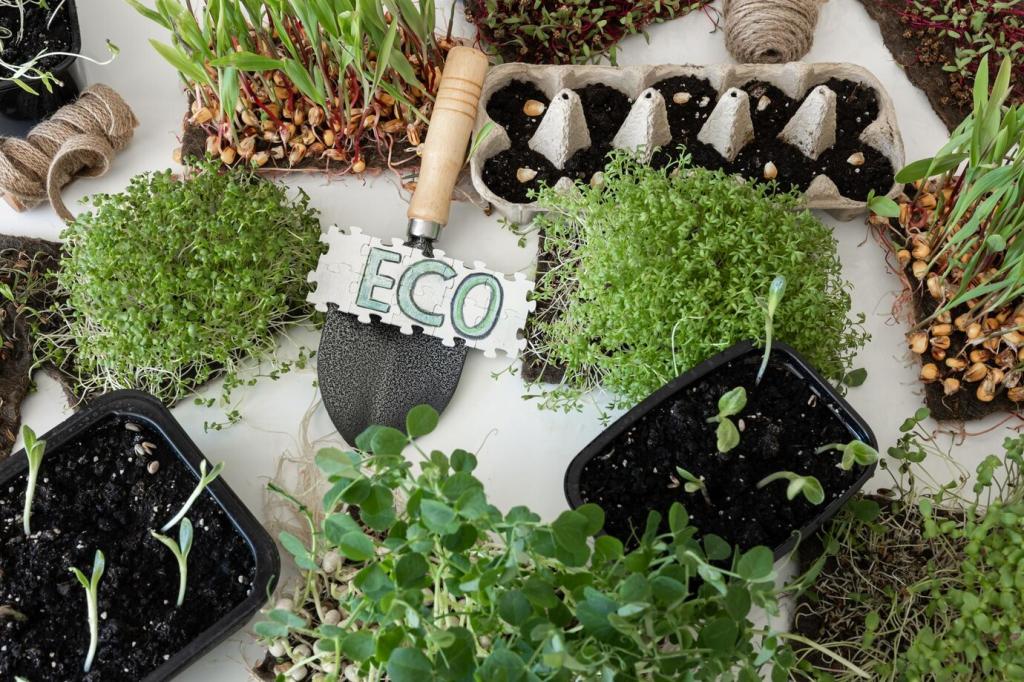Essential Vegetables for a Home Cook's Garden
Today’s chosen theme: Essential Vegetables for a Home Cook’s Garden. Let’s grow the flavor foundations your kitchen craves—productive, dependable vegetables that turn everyday meals into small celebrations. Join our community, swap planting tips, and subscribe for weekly, cook-first ideas that keep your garden and pantry humming.

Building Your Core Crop List
Tomatoes for sauces and salads, peppers for sizzle, leafy greens for crunch, carrots for sweetness, and onions for depth—these are the backbone of a home cook’s garden. Think about your go-to dishes, then choose vegetables that appear in them weekly. What flavors does your kitchen always come back to?


Building Your Core Crop List
Compact bush beans, determinate tomatoes, and cut-and-come-again lettuces deliver generous yields in tight quarters. Trellis cucumbers to reclaim vertical space, and tuck scallions along bed edges. Sketch your layout, then edit ruthlessly. Share your plan, and we’ll feature clever, small-space arrangements in next week’s newsletter.
Right Light for Reliable Harvests
Fruiting vegetables like tomatoes, peppers, and cucumbers need 6–8 hours of direct sun for steady production and full flavor. Leafy greens tolerate partial shade, which can even extend their cool, crisp texture. Track sun patterns for a day, then position each essential vegetable accordingly for best results.
Soil Health That Feeds Flavor
Aim for rich, well-drained soil with a pH around 6.2–6.8. Mix in compost for structure, aeration, and slow-release nutrients. Add organic matter each season, mulch to protect microbial life, and avoid compacting beds. Healthier soil means sweeter carrots, sturdier tomatoes, and herbs—when used—so fragrant they perfume your cutting board.

Tomatoes: Sauces, Salads, and Salsas
Plant one paste type for simmered sauces and one cherry type for quick salads and roasting. Determinate tomatoes keep to a compact habit; indeterminate vines climb and fruit for months. My neighbor Maria swears her summer tomato soup tastes different when the fruit is still warm from the afternoon sun.

Leafy Greens: Cut-and-Come-Again Abundance
Loose-leaf lettuces, kale, and spinach can be harvested leaf by leaf, delivering constant salads and sautés. Sow small patches every two weeks for steady bowls of greens. A chef friend keeps scissors near her back door, snipping tender leaves minutes before plating. Subscribe for her favorite five-ingredient dressings.

Alliums: Onions, Garlic, and Scallions
Onions and garlic form the flavor base of countless dishes, while scallions bring quick brightness. Plant storage onions for long keeping, and slip garlic cloves into fall beds for robust summer bulbs. Share your best onion caramelization stories—we’ll feature reader tips for turning garden alliums into golden kitchen magic.
Succession Planting for Continuous Meals
Sow small amounts of lettuce and spinach every 10–14 days, choosing heat-tolerant varieties for summer and cold-hardy picks for fall. Harvest outer leaves and let centers regrow. Tell us which varieties stayed crisp longest in your heat; we’ll compile a zone-by-zone shortlist for subscribers.

Pest- and Disease-Savvy Strategies

Rotation and Resilience
Avoid planting tomatoes, peppers, and eggplants in the same bed year after year. Rotate by family every three seasons to reduce soil-borne problems. Choose disease-resistant varieties and sanitize stakes. Tell us your rotation map challenges; we’ll share an easy template and printable labels for subscribers.

Companions and Diversity
Interplant onions near carrots, tuck nasturtiums to distract aphids from cucumbers, and add marigolds around tomatoes for soil-friendly benefits. A diverse bed confuses pests and supports pollinators. What companions truly worked for you? Share real results so the community can focus on proven pairings.

Gentle, Effective Defenses
Row covers shield seedlings, handpicking tackles beetles, and targeted sprays like neem or insecticidal soap can help when necessary. Beer traps catch slugs; BT addresses caterpillars. Keep notes on what worked and when. Post your observations to help fellow cooks protect their essential vegetables thoughtfully.
Small Spaces, Big Yields
Train cucumbers and beans up trellises or netting to save ground space and increase airflow, which helps limit powdery mildew. Harvest often for slender, tender pods and straight cukes. Share photos of your vertical setups; creative rigging inspires growers working with tight patios and porch rails.
Harvest, Storage, and Quick Kitchen Prep
Tomatoes smell richly aromatic when ready; cucumbers feel firm and cool; leafy greens are crisp in the morning. Harvest with clean shears and keep a gentle touch to protect vines. Tell us your favorite garden-fresh taste test—what made you stop mid-path and grin this season?
Harvest, Storage, and Quick Kitchen Prep
Cool greens fast in cold water, spin dry, and refrigerate. Cure onions and garlic before storing in a dark, airy place. Keep tomatoes at room temperature for flavor. Share your storage hacks, from breathable bags to root-cellar substitutes, so our kitchens waste less and savor more.


